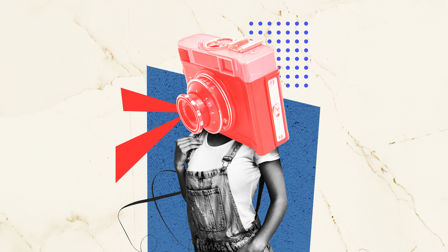Martin De Thurah
After a youth spent pondering cardboard box-worlds and the stop buttons in buses, this Danish dreamer dabbled in pa
After a youth spent pondering cardboard box-worlds and the stop buttons in buses, this Danish dreamer dabbled in painting, ceramics, agitprop and acting until things came into focus and he begun to make films. Stephen Whelan dives with him into the fuzzy borders of his memory
“The thing is there’s so much more I want to explain to you. I mean I think when you read over what we talked about you’ll see that there’s so much that we didn’t even start to cover. So how are you really supposed to get a sense of everything you need to know?” This is how Martin de Thurah ends our first extended conversation about his work.
Over a period of about a month, several more phone calls take place during which, at points, it seems like something has been understood. He clarifies factual details with follow-up emails. A breakdown of everything he’s ever shot is sent over. There’s another call where we fill in the blanks left by a malfunctioning Dictaphone and a poor memory. But still his earlier comment rings true. What I’m about to do with his words is create a piece of fiction and ask you to pretend you’ll take it as the real deal.
Martin de Thurah is Danish. He’s shot two commercials. One for Ikea and another for Rega. If you include the spot he made for CPH:DOX – the Copenhagen International Documentary Festival – he’s shot three. He’s also made a bunch of music videos. Maybe 16 – including the three he’s just shot back-to-back with fellow Bacon directors Adam Hashemi and Lasse Martinussen. So that’s what he’s more known for. There’s the pigeon hole.
De Thurah says he can’t really remember having much of an imagination as a child. However, what he does remember is standing in doorways saying nothing, looking at his father. And spending hours inside cardboard boxes pretending to be riding an elevator. In high school, he explains, he felt as though he was autistic. Some time after he turned 13 he became conscious of turning into an adult. “It was around then that I had this very sharp sense of distinction between myself as an object outside of things and the world, which I wasn’t connected to,” he says. “I knew I was a system in the same way a forest is a system but I didn’t feel that I fitted into the world. I tried really hard to blend in. I can remember specific things, like when I had to press the stop button on the bus I’d have to think about timing it properly, trying to work out exactly when the right moment was to rise up and press the button so it looked normal.”
De Thurah’s early artistic experiments included a passing interest in the rogue digital art and music of the Commodore 64 demoscene and an attraction to drawing and painting “fishes and weird mountains. Some quite abstract stuff for someone of a young age”. Although his immediate family weren’t particularly artistic, de Thurah recalls a great uncle who painted and he can specifically remember one evening spent watching him create a swan out of melted blown sugar in the bakery he owned.
Straight out of high school de Thurah took up a job with an animation company, the first of two occasions he can recall where he found himself steering towards the rocks. “I felt that my soul was sucked out by working for a company where the aim was to produce something to earn money,” he explains with a lilting Danish accent.
While animating on the first edition of Photoshop might not have been the path de Thurah had intended to take, the experience taught him that it was possible to do something for a living that didn’t feel like a job. “Still,” he says, “I knew that I had to go to university to become a real person.”
On top of a growing interest in photography (with more or less successful results along the way), de Thurah spent a brief period attached to a theatre group, first of all recording their performances with stills and later taking to acting himself. “I had to learn how to be with people and not be afraid of anything,” he muses. “I had this sense of energy to combat all the fears I had.
I think a part of me knew that I had to face and overcome all the things I was afraid of. That’s something I’ve been doing systematically since I was 15. So theatre and being on a stage, being in front of people looking at me, being naked in that sense, was one of the fears that I had to kill in myself.”
After the unsuccessful – albeit personally productive – acting stint, de Thurah developed an intense but short-lived interest in ceramics before founding an atelier in a disused factory space with a group of much older artists. “I was the little boy among them all. I was only 21 and they were all in their late forties. But for me it was about being free. It was lonely doing painting again but it was also freeing,” he elaborates. “I wanted to be so much a part of the world and be able to move more freely, so I had to learn what that meant and how to do it.”
In 1996 the animation company he had started out at got in touch with a brief from MTV Brazil to create a computer game for an interactive TV show they were launching. De Thurah admits this was the second time he felt his energy was invested in something not completely true. “It was quite inspiring in a way but also it was just producing and I felt I shouldn’t be doing stuff like that, but that I should be being more creative,” his voice trails off.
In 1997 he made an unsuccessful attempt at applying to art school while exploring etching and continuing to paint. Around this time de Thurah became associated with a group of left-wing activists, producing posters and illustrations for a guerrilla magazine. “They had strong opinions about this and that and for me, because I come somehow from a very unpolitical family, this world was very inspiring. In my soul I didn’t share the same radical ideas they had.” He further elucidates, “I could appreciate their emotion but I felt the emotion was stronger than their argument. In a way I wanted to be able to have as strong opinions as they did – but I couldn’t look upon the world with just one perspective.”
Over the next year or so, de Thurah says he felt his life beginning to condense, to gain momentum, his creative drive ‘aflame’.
“Everything was going so fast,” he says, his pace quickening as he describes things. “Everything I did somehow led to something else, to new opportunities. I was doing posters for films while working in the art department at the same time as creating a show for a big Danish museum in
Jutland, which led to a project for a Dada exhibition.”
Shifting his focus, de Thurah submitted a short film about a woman trying to find her lost soul to The National Danish Film School and against the odds was accepted for one of the six places offered biennially. “It was a huge world that opened and unfolded in front of me,” he recalls. “Getting in to the film school was so significant because I felt in a way that I had overcome something impossible. I realised that everything I had been doing was all pointing in the same direction. All the different things I’d practiced had helped me to develop my own voice, to create something, a form of expression, that was me.”
The next big hurdle, de Thurah explains, was to build a filmic language that allowed him to convey ideas through emotional tones and to discover a way to indicate a region of feeling without explaining, describing or prescribing narrative attributes to the space.
“For me learning about filmmaking meant rejecting perfectionism. I wanted the things I made to be broken from the outset so they would be vulnerable and open,” de Thurah elaborates. “I think I got close to that when I started to mix fiction and documentary. The films I find most beautiful are the ones that create a mental space and try to describe something between people in an indirect way. In my films I wanted to point at the space I was talking about, rather than illustrating it, because that felt clumsy.”
Developing his own filmic language with an internal logic of its own has been an ongoing project since then. In his short film We Who Stayed Behind and the longer Young Man Falling, through videos for Fever Ray and into his commercials work, de Thurah has built a consistent, if undefined (indefinable perhaps?) creative space.
Mining his memories of youth, his intense awareness of the crackling static of emotion and the unavoidable confusion of being in the world, de Thurah has carved an intensely personal, yet universally accessible aesthetic. “I think youth and growing up is such ripe material to explore because you don’t unpack it as you’re experiencing it. To me the whole experience exists in my memory like a series of interconnected bubbles so it is interesting to go back and dive into that and remember very clearly all the weird details. When you’re going through those changes into adulthood everything is sensory, you don’t put it into words. It’s one of those spaces with fuzzy borders.”
In 2005 de Thurah signed to Academy in London and shortly after joined Bacon in Denmark and Wanda in France. He lives in Copenhagen in an apartment with a courtyard and a walnut tree, under which he grows various berries. He recently exhibited a collection of his photographs in Colombia.
“I think I need to be able to reinvent some parts of what I do, [to go] back to an earlier state before people expected certain things from me,” he says when questioned about the future. “I would kind of like to change. I would like to be able to move more freely in trying different things, working with ideas perhaps, rather than it having to be so personal all the time. There are some things I don’t think I can get past. But maybe that’s a strength. Maybe that’s me somehow?”
Connections
powered by
- Unspecified role Martin De Thurah
Unlock this information and more with a Source membership.








